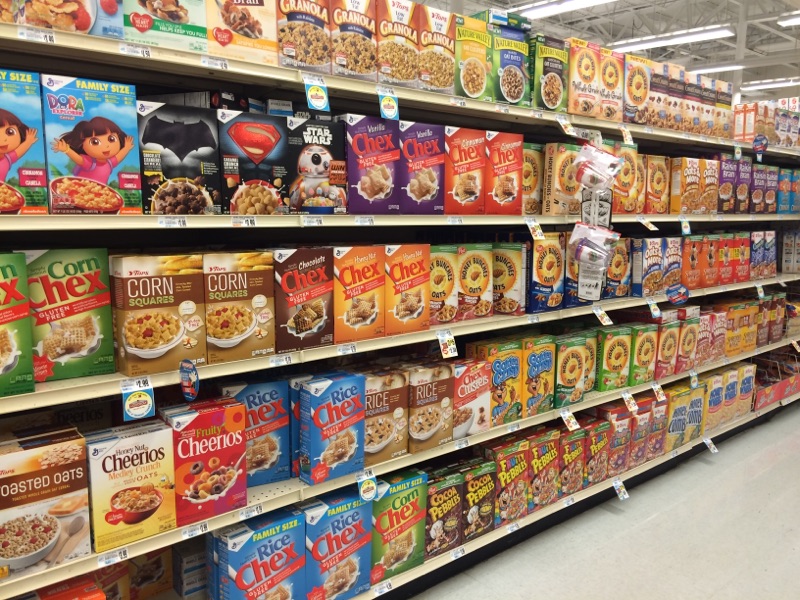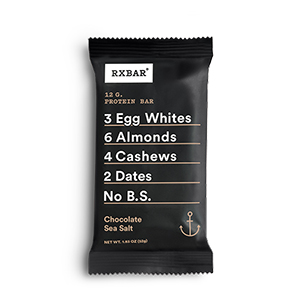People buy products that they identify with.
When your product is differentiated and tells a story people find meaning in and can get behind, you’ll have a customer for life.
When you walk down the cereal aisle at your local grocer, what do you notice? What stands out?
Take a look at the photo below to help remind yourself of what the typical aisle looks like. In this case, it’s the cereal aisle.

Nothing stands out, does it? It all kind of blends together. Every product is the same. Sure, there’s the organic version vs. the processed version but that’s it.
Even on closer inspection, it’s hard to tell the difference. You have to spend too much time actually deciphering the difference.
Ensuring low-cognitive load is a tactic for grocery stores. It helps them build loyalty. The more work you have to put into identifying and deciding the specific products you like the more likely you are to stick to that store. Why go through that trouble all over again by shopping somewhere new.
Things fall short for those with their products on the shelves. They’ve put themselves in a position where they’re in brutal competition with one another.
The problem is that each company is competing as if they’re a commodity. They’re not differentiating themselves.
What if you could enter a market with little to no competition? What if, rather, you set the pace of the market?
You do this by identifying inefficiencies that others are ignoring. Here’s a great example, sticking with the grocery analogy.
RXBAR

Take a look at the packaging for the RXBAR.
Not only does it stand out from the other bars, it tells a completely different story.
Here’s the story it tells:
“I’m a nutrient-dense bar made out of real food – and none of that crap you can’t pronounce. I’m for people who care about what they put into their bodies.”
What’s the number one thing their ideal customer had to do before their bars existed? Go through each bar on the shelf, looking through the ingredient list to determine whether it was for them. What’s worse, they’d end up buying a bar from a company that did not understand them. They bought bars for their efficiency. Not taste.
What matters is the one problem or pain you’re solving for customers. Does your product solve unique opportunities that others are ignoring?
Businesses fail when they don’t create products that people actually want. They fail when their products don’t tell a story that is easy to understand and resonates with people at the right time.
If you want your products to stand out, you need to understand their position amongst competing products.